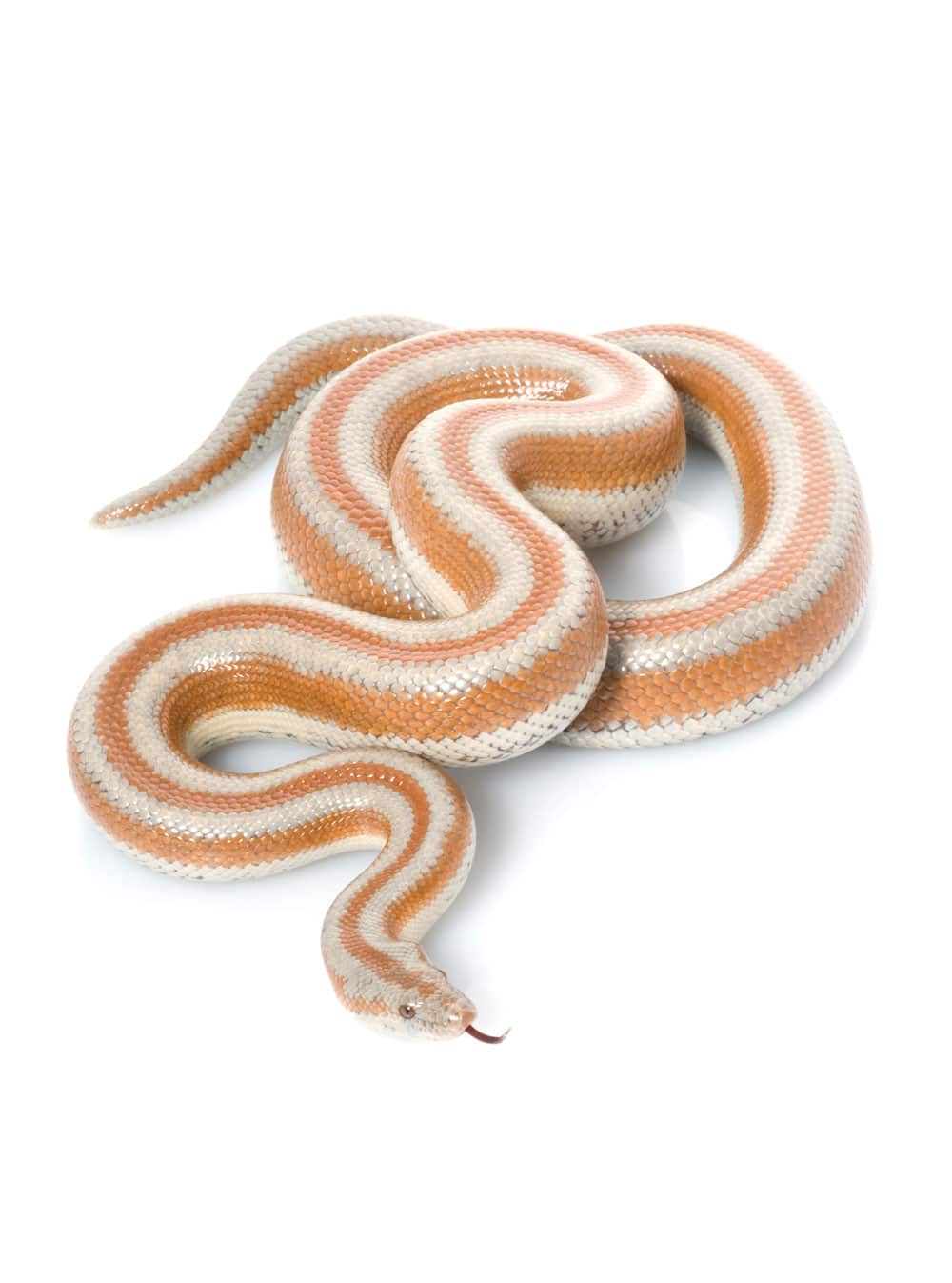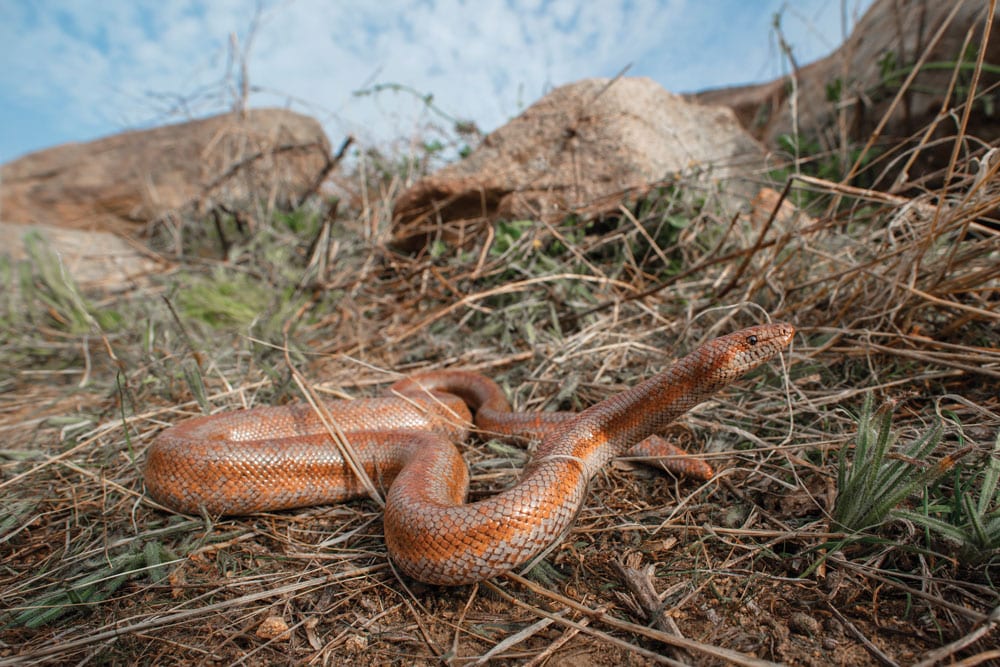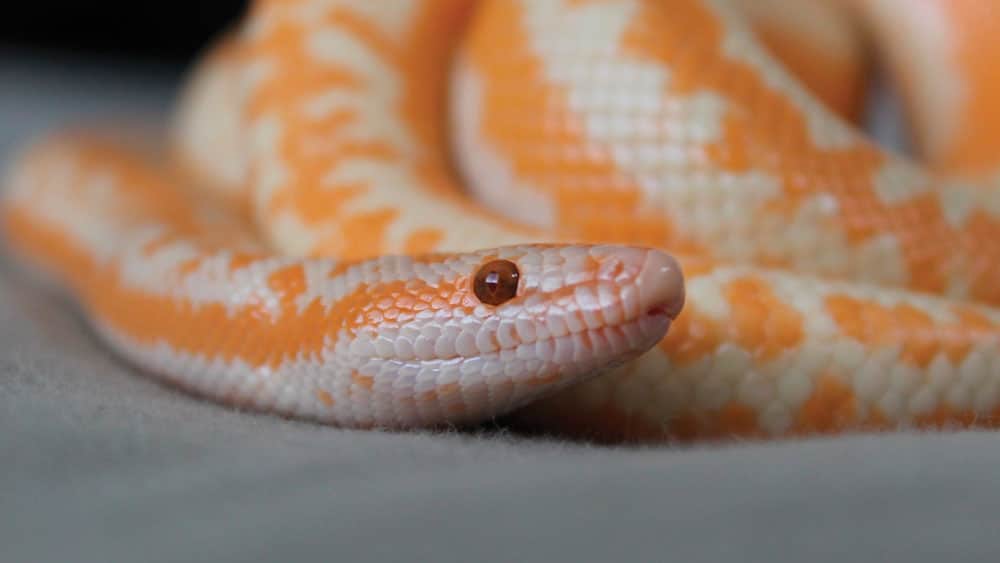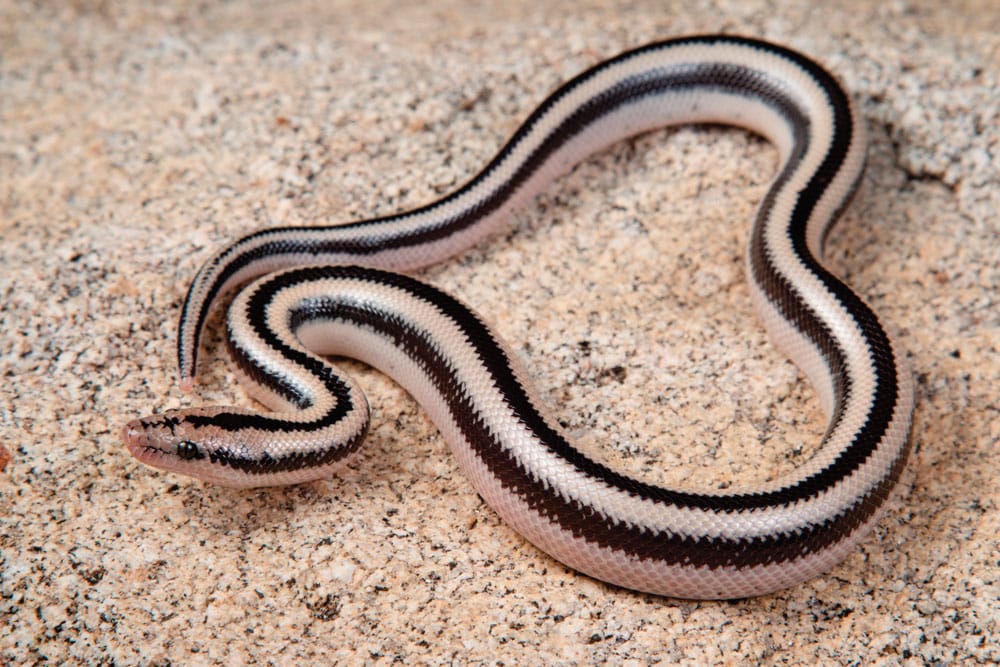The rosy boa is one of two boa constrictors native to the United States, the other being the rubber boa
The rosy boa (Lichanura trivirgata) is a snake of the family Boidae and is native to the Southwestern United States into Baja California and Sonora state in Mexico. There are four known subspecies of this snake; Arizona rosy boa (L. t. arizonae), Desert rosy boa ( L. t. gracia), Baja rosy boa ( L. t. saslowi), and Mexican rosy boa (L. t. trivirgata).
In the hobby, captive-bred specimens are named after their locality. These include such locality names as coastal California, coastal ivory, desert phase, and Mexican. In addition, there are a variety of morphs available, including hypomelanistic, axanthic, anerythristic and more. Along with the rubber boa (Charina sp.), the rosy boa can be seen in the deserts and coastal regions of southern California while out herping. The rosy boa has a very calm demeanor, making it one of the more popular species for those new to keeping snakes. In addition, they are also a fairly short snake, growing to about 2 to 3 feet in length. The rosy boa is a semi-popular snake among snake keepers. While they can be found at reptile shows, your local reptile store, and via breeders on the Internet, they aren’t commonly found at the big box pet stores that seem to focus on ball pythons, corn snakes and the occasional kingsnake. The rosy boa is also a long-lived snake, capable of living 25+ years or more. Many snakes can easily attain this age when cared for properly.

San Mateo Rosy Boa Photo by NatalieJean/Shutterstock
Enclosure Tips
While neonates can be kept in small 10- to 20-gallon equivalent enclosures, adult Rosy boas should be kept in larger enclosures. A 40-gallon equivalent enclosure (36″x 18″x 18″will work for an adult, with a larger enclosure ideal. Metal screen tops, however are not recommended for this snake as they have a propensity to rub their noses on the screen, which can cause abrasions. To avoid this, you can choose an enclosure that is too tall for them to climb up and reach a screen top. The enclosure should be escape proof, like all enclosures. If you are going to build a desert-style enclosure, sand designed specifically for reptiles is the best choice as rosy boas in the wild live in and traverse sand all the time. Otherwise, aspen bedding and coco-coir make good alternative substrates. Ensure you add enough substrate so your snake can burrow, as burrowing is a big part of the rosy boa’s natural movements.
Hides and Climbing Tips
While rosy boas are not really considered climbers and prefer solid ground (and underground) rather than in tree branches, they will climb rocks. Ensure that your enclosure has several secure (meaning they cannot tumble and potentially injure your snake) rocks and at least one hide on the warm side of the enclosure and one hide on the cool side of the enclosure. You can use cork bark hides or some strategically placed mopani wood. You can also place a large rock in the enclosure that will provide enrichment for your snake to climb up, around and over. Place the rock on the warm side of the enclosure and it can double as a basking spot. If you are using a glass enclosure, just make sure there is enough substrate under the rock to prevent the rock from touching the bottom. You can also purchase one of the many commercial hides that combine both a cave and a basking spot above the cave. These are inexpensive and easy to clean, and literally provide two functions for the price of one.

Northern 3 lined coastal rosy boa. Photo by Alexander Wong/Shutterstock
Lighting/Heating Tips
Heating can be provided via heat tape or an undertank heat pad. You can also provide heat via an overhead heat lamp or a ceramic heat emitter. Personally, and depending on the enclosure, I prefer the UTH as it will provide instant belly heat to aid in digestion. Temperatures at the hot end of the enclosure should be set to around 80 to 85 degrees Fahrenheit (26.7 to 29.4 degrees Celsius) during the day and into the 60s at night. Connect the heating elements to a thermostat for better control. Invest in a good thermometer to check the temperatures inside the enclosure.

Albino rosy boa.
Photo by desenaphoto/Shutterstock.
Water Tips
Because the rosy boa is a desert dweller, a lot of its activity in the wild is dependent on moisture. In the wild during dry spells, the rosy boa stays underground to keep hydrated. When it rains they will come out. In captivity, it is imperative that your snake has access to fresh water. Ensure the bowl is large enough to soak in if the temperatures inside the enclosure (think summertime) get high. There are several reptile specific water bowls that have the look and feel of rock, which would make a great addition to your rosy boa’s enclosure.
Feeding Tips
The rosy boa is not a fast snake and cannot out crawl its prey. It is an ambush predator that will wait for its prey to walk close enough for it to strike. In the wild, the rosy boa eats a variety of prey items, including birds, lizards and small mammals such as pack rats, deer mice and kangaroo rats. In captivity, feed your adult rosy boa frozen/thawed mice or rat pups that are about the same size as mice. Feed neonates frozen/thawed pinky mice once a week for about six months, moving up to fuzzy mice and then hopper mice as the snake grows. When your snake is adult size, you can feed them two to three times a month during the spring and summer and twice a month during the winter.
Rosy boas are neat snakes for those new to snake keeping as well as those with experience keeping snakes. They are a beautiful boa with a lot going for them. They come in a variety of morphs and hail from a wide range of localities. Their care requirements are fairly straightforward and are considered by many to have super calm and friendly demeanors. As with all snakes, your individual snake will have its own disposition, but all in all the rosy boa is a great snake. They are very personable, easy to handle and look great in a desert-themed enclosure.
John Virata is editor of REPTILES magazine. He has kept rosy boas and boa constrictors and currently keeps two ball pythons, two corn snakes, a California kingsnake and a western hognose. His crested gecko’s name is Jello.


